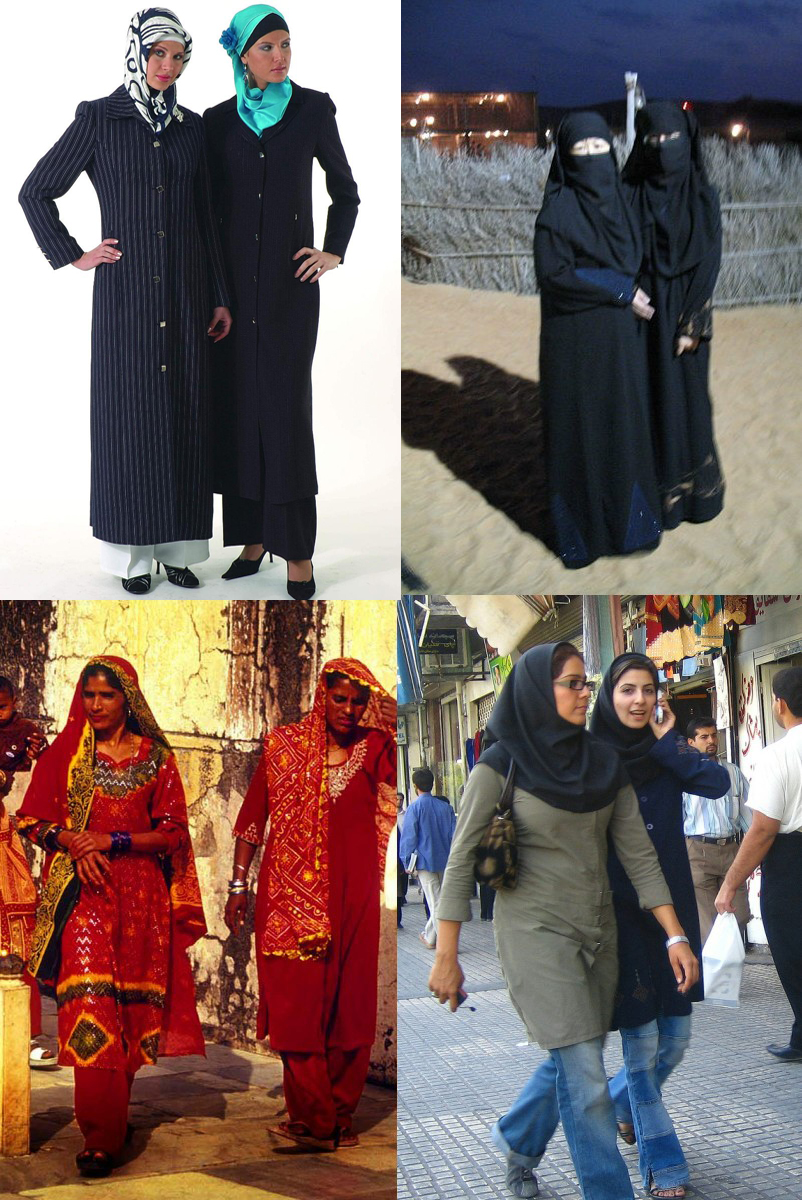The idea of hijab - to cover or provide privacy - is a central factor in any discussion of Moroccan women's clothing. "In some Arabic-speaking countries and Western countries, the word hijab primarily refers to women's head and body covering, but in Islamic scholarship, hijab is given the wider meaning of modesty, privacy, and morality" (Wikipedia Hijab). Thus being, the essential philosophy behind Moroccan women's clothing is to cover the body with clothing which preserve for the wearer an impression of modesty, piety, and highly reserved sexuality. The Qur'an (24:31) states that:
“And say to the believing women that they cast down their looks and guard their private parts and do not display their ornaments except what appears thereof, and let them wear their head-coverings (khimars) over their bosoms (jaybs), and not display their ornaments except to their husbands, their fathers, their husbands' fathers, their sons, their husbands' sons, their brothers or their brothers' sons, or their sisters' sons, or their women, or the slaves whom their right hands possess, or male servants free of physical needs, or small children who have no sense of the shame of sex . . . "
In practice, hijab means that women must keep the essential forms of their womanhood covered from view with clothing that does not provide much of an indication of the shapes and graces found within when in public or in the company of men that are not of their family. This means that the women of Morocco tend to publicly wear long and loose robes (djellaba), button-up blouses which extend down to the knees or the ankles (kafkan), and headscarves (khimar) which cover most of the hair, the ears and the neck. Young girls in Morocco are except from the practice of hijab until the time of puberty, when they too are required to begin donning the concealing clothing of their mothers.
Although hijab - the wearing of modest clothing - is highly regarded in Morocco it is not compulsory for a woman to dress this way. It is becoming fairly common in Morocco for women to go out in public without wearing headscarves, long sleeves, and in Western style clothing. But for formal occasions, such as weddings or religious festivals, the principles of hijab prevail and women tend to wear traditional style Moroccan clothing (Wikipedia).
Examples of hijab mandated Muslim women's fashions are below:

Various examples of hijab throughout the Muslim World. Photo courtesy of Wikipedia Hijab article.
morocco culture,moroccan food,morocco food,moroccan cuisine,morocco beaches,moroccan meal,beaches in morocco,moroccan culture,hercules cave,hercules cave morocco

No comments:
Post a Comment